- Products
-
-
Product Features
-
Explore More
-
-
- Solutions
-
-
By Industry
By Department
-
By Business Need
-
-
- Learn & Support
-
-
Product Education
-
Product Support
-
-
- Resources
-
-
Insights
Events
-
-
- Partners
-
For mental health service professionals, patient care time is often consumed by administrative tasks. Faced with documentation, lengthy processes, and complex regulatory rules, physicians can spend over 15 hours per week on paperwork and administration.
These manual administrative processes are a hindrance for any organization — but in healthcare, they can mean the difference between spending time pushing paper or delivering life-saving patient services.
At the Nueces Center for Mental Health and Intellectual Disabilities (NCMHID), which serves thousands of individuals, response times are everything. The county relies on the organization’s 300 staff for crisis intervention services, youth and adult mental health services, and intellectual and developmental disability services.

Carlos Cavazos, system analyst at NCMHID, believes that by streamlining processes, he can alleviate staff workload to prioritize patient care. His philosophy? “If I can help a person go home without any headaches, I’ve done my job,” said Cavazos. His tool of choice? Laserfiche.
NCMHID has used Laserfiche process automation to systematically reduce wasted time, improve accountability, and eliminate costs associated with paper and manual tasks. This optimization has improved process efficiency by up to 99%, replacing manual workflows with configurable forms and process automation.
Initially, NCMHID used Laserfiche for medical record scanning and storage. After discovering Laserfiche’s powerful process automation capabilities, Cavazos started to automate simple tasks like business card creation. These small projects made a huge impact — relieving HR staff of handwritten forms or typing information into Microsoft Word — leading to more automated processes across the organization.
After the initial success, NCMHID began tackling more complex processes, including streamlining incident reports. As a critical piece of safety and risk management, incident reports are of the utmost importance to NCMHID. The State of Texas Health and Human Services requires staff to submit reports within an hour of the incident.
The legacy process used paper forms that were physically delivered from one person to the next, sometimes between different buildings in different cities. This manual approach led to lost documentation and delayed approvals. Because there was no visibility into the form status, it was challenging to hold staff accountable for punctual completion. There was also no way for the organization to track and identify trends to prevent future incidents. Executive reporting was equally challenging. Gathering incident data for executive review could take up to a month, requiring staff to search through file cabinets for information.
The process was replaced with a tailored Laserfiche form, making reporting more intuitive for case managers. As they fill out the form, dynamic fields enable employees to report when medical attention was necessary. Form submissions kick off an automated workflow that gathers signatures from medical staff.
Laserfiche process automation routes these forms to appropriate supervisors for review and approval. Case managers are expected to complete the form within an hour of the incident. If they do not:
Once the form is submitted, incident reports go to service directors and then to a repository where they can be easily referenced for executive reports.
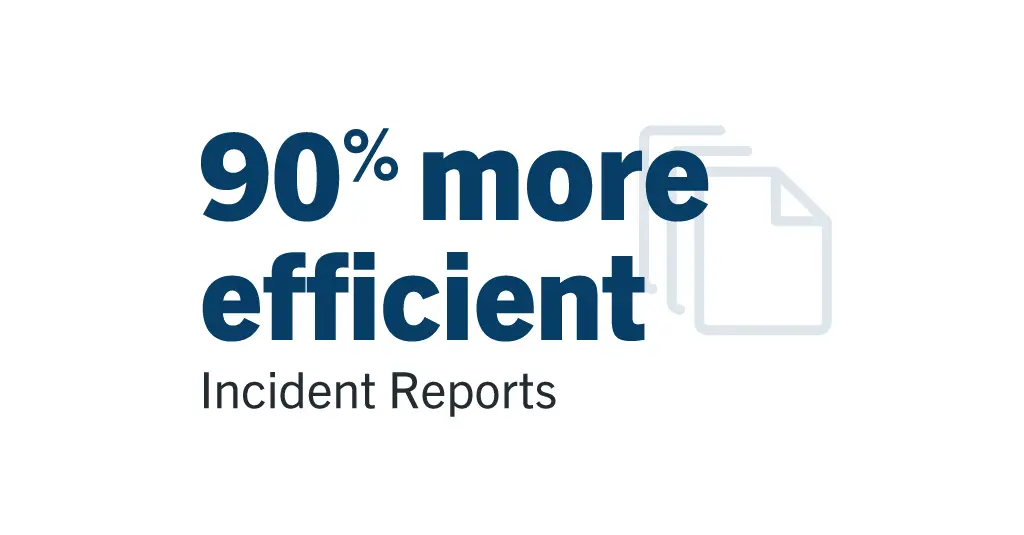
The organization enhanced the efficiency of the incident report process by 90% with Laserfiche Forms and process automation. The automated workflow prevents lost documentation, improves traceability, and saves valuable staff hours digging through filing cabinets. For NCMHID leadership, this process brings real-time visibility into incident trends and supports compliance, ultimately preventing incident recurrences.
Prior to Laserfiche, NCMHID’s approach to storing business documents and archived medical records relied on paper and disjointed servers. Imagine: a surprise audit requiring archived business records, or a client needing medical proof of care for benefits. For Cavazos and his team, handling these requests meant rummaging through filing cabinets and different servers that could take up to two months.
This system wasn’t just a time drain. Complying with HIPAA regulations without audit tracking and security functions became a headache when storing records across various mediums.
Cavazos recognized an opportunity to enhance the organization’s records management with Laserfiche’s repository and information governance capabilities.
Laserfiche’s central repository transformed how NCMHID managed its records. What was once a time-consuming search for records became a few clicks through the repository. Robust security tools help the organization authorize granular access to sensitive medical records, supporting NCMHID’s HIPAA compliance practices.
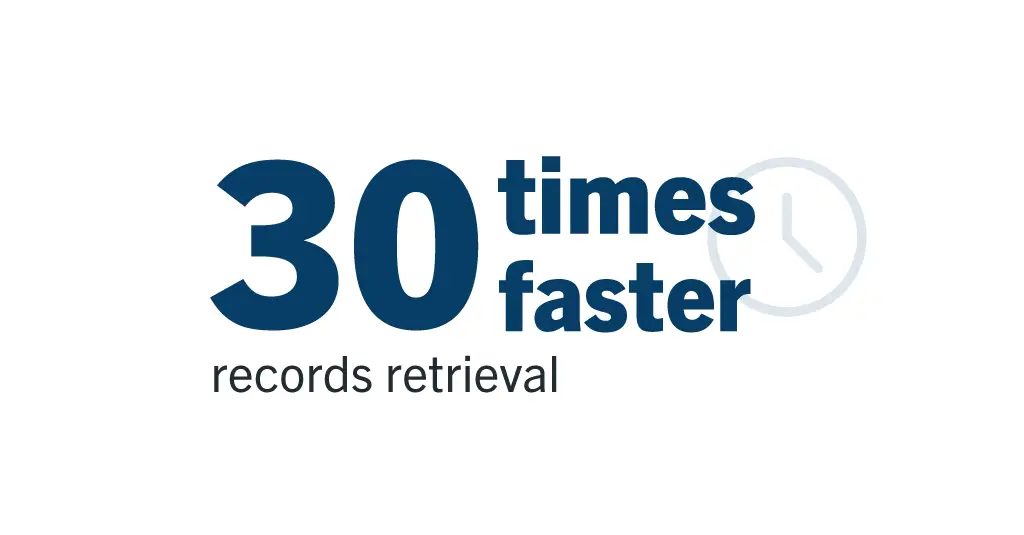
As a result, NCMHID can retrieve records 30 times faster with Laserfiche. When a client was due back pay and needed medical documentation indicating proof of care, “we were able to obtain all their records, stamp them, and present them to the client in no more than a day,” Cavazos described. “It was so easy for us to find them.”
NCMHID’s use of Laserfiche now extends organization wide. Cavazos has used Laserfiche to automate processes including travel reimbursement, a complex process that requires cross-departmental authorization.
Cavazos automated mileage and travel reimbursement calculations through Laserfiche Forms based on:
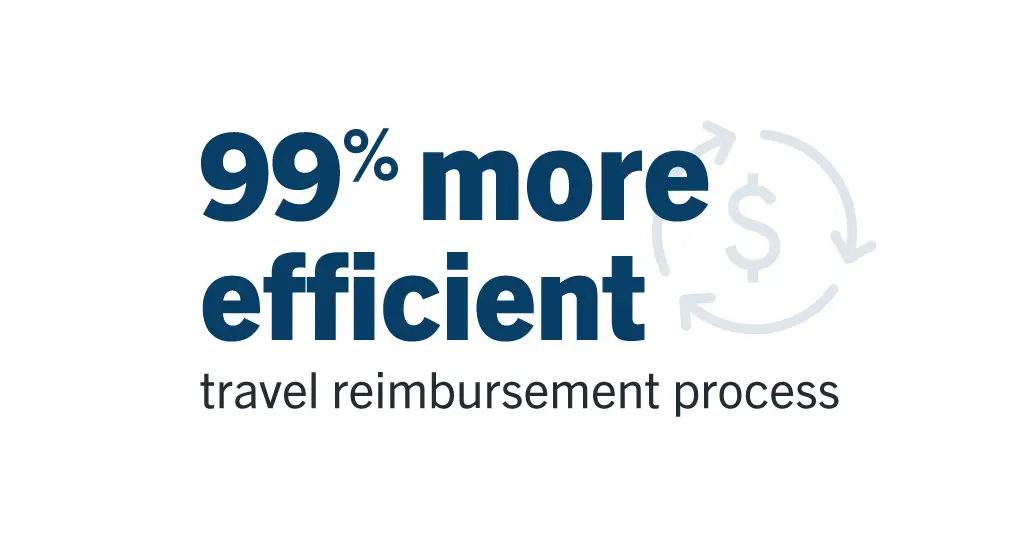
Using a centralized form, staff can submit requests for manager approval and payroll reimbursement within seconds rather than days, making the process 99% more efficient. This streamlined process not only accelerates payout time, but also ensures documentation is consistently organized and accessible. As a result, audits became noticeably quicker, from a day of rummaging through cabinets down to seconds through a search query.
Looking to the future, Cavazos aims to implement new automations including document retention schedules, and a repository integration with Power BI. Cavazos is confident in Laserfiche’s ability to create meaningful change for his coworkers’ workflows.
“I’ve made people’s life easier with Laserfiche,” said Cavazos. “They get to go home without stressing over processes. I tell them, ‘Don’t worry. Laserfiche has it covered.’”
As public sector modernization becomes a mandate, cities must evolve their core government processes to meet rising citizen expectations for digital service. The City of Mount Pearl successfully answered this call with Laserfiche, transforming the way it handles information and manages citizen services. By implementing digital forms, automating manual workflows, and migrating to Laserfiche Cloud, the city has achieved significant gains in efficiency, data accuracy, and the quality of services delivered to its community.
The city’s initial adoption of Laserfiche focused on fulfilling regulatory requirements by digitizing records and applying retention schedules in the Laserfiche repository. However, the true transformation began when the city embraced workflow automation to replace error-prone, manual processes.
“A lot of our legacy processes were manual, using spreadsheets, manually typing in information,” said Bill Peddle, records and information management officer at the City of Mount Pearl. “One of my goals when I develop a process is to remove as much manual data entry as possible, because anyone will tell you that manual data entry is your biggest avenue for error.”
This focus on automation and error reduction has been applied across multiple departments, including HR, Finance, and Permitting:
“The biggest thing is at the end of the day is, it’s not data stuck on someone’s shared drive,” Peddle said, highlighting the importance Laserfiche’s ability to capture information and enforce consistent naming and folder structure, maintaining data integrity.

A major part of the city’s digital transformation strategy involves replacing all old PDF forms with online Laserfiche Forms. One major transformation included combining six separate PDF forms into one permit application. The city also modernized their municipal elections nominations processes, as well as updating their traffic calming and inspection forms processes, among others. This shift has directly improved the speed and quality of services for residents.
Legacy forms required citizens to download, print, fill out, and then manually scan or drop off the PDF forms. Now, residents can fill out digital forms on the city website, and the system ensures they are correct and complete before submission. By making fields mandatory, the forms capture the data staff need to begin processing an application immediately. “This cuts down on that back and forth that the person who’s receiving the form has to do,” Peddle said. “They used to have to call the submitter and say, hey, you didn’t supply this or that — this just took extra time that we don’t have in city government.”
An added benefit of the new Laserfiche Forms: accessibility to a wider range of citizens. The city is incorporating Google Translate via an API into its public-facing forms, allowing residents whose first language is not English to translate the form within the application. “They’re not having to go to someone to try to figure out what the form says, which I thought was an amazing capability,” Peddle added.
The city’s goal is not just to optimize form submission, but to build end-to-end automated processes: “We’ll continue to improve and streamline,” Peddle said. “We aren’t stopping at form submissions; we’re going to be processing all of those applications with less manual error and faster speed.”
After more than 10 years using Laserfiche, the City of Mount Pearl recently had to choose between continuing to self-host or move to Laserfiche Cloud. The decision was ultimately made simple by the compelling benefits of a fully managed environment.
“The cost of a new subscription was very similar to our current subscription,” Peddle explained. “The key thing is that we don’t have to maintain all these local servers. And we don’t have to maintain all the storage, which adds up in costs.” The move allows the city to stay current on software and security updates.
According to Peddle, the benefits of migrating to Laserfiche Cloud included:
Staff adoption of the new environment has been overwhelmingly positive. The cloud interface is centralized and streamlined. “Before we had a repository shortcut; we had a Forms shortcut — now we just have Laserfiche Cloud and it has everything in one place,” said Peddle. “The pickup and the adoption of it by staff has been great.”
The successful roll-out of processes in various departments has created an internal appetite for further automation across the city. “Once you meet with the department and you provide them one process, and they see how well it runs, they’re immediately asking, ‘What can we do next?’” Peddle said.
Ultimately, the most rewarding aspect of the entire project for the Peddle is the positive impact on city employees and residents.
“My favorite thing about Laserfiche is not the software itself; it’s the feedback that I get when a process is built, and users saying, ‘This makes my work life so much easier,’” he added. “At the end of the day, that’s the ultimate goal.”
In today’s digital workplace, data is generated faster than organizations can keep up, flowing in from emails, documents, chat messages, cloud drives, vendors, collaboration tools and more. While this information should be a strategic asset, it instead becomes a burden. The sheer volume, variety and speed of data creation can leave many drowning in digital clutter.
Managing this ever-growing pile of data is like trying to shut a giant digital junk drawer that’s overflowing, disorganized and nearly impossible to control.
At the core of this challenge is the fact that 90% of enterprise data is unstructured. That means it lives in inconsistent formats, scattered across disconnected systems, and it’s often difficult, if not impossible, to find or use effectively. This data is your organization’s ghost content.
Ghost content refers to the data your organization technically owns but can’t find or use effectively—or may not even realize exists. It often hides in forgotten file shares, siloed legacy systems, outdated email threads, paper archives and even on personal desktops. It can also be locked away in unsupported formats or buried within outdated workflows, which makes it invisible to the business, school or municipality and inaccessible to the people who need it most.
When left unmanaged, ghost content quietly drains productivity, increases compliance risks and keeps valuable insights out of reach. Employees waste precious time searching for misplaced or mislabeled information and frequently end up recreating existing content, leading to duplicated efforts and increased chances of errors.
Beyond operational inefficiencies, ghost content risks serious compliance threats. Without proper visibility and governance, sensitive data such as personally identifiable information (PII) may be stored without the right access controls or audit trails, exposing organizations to legal liabilities and regulatory violations.
Data privacy laws such as the General Data Protection Regulation (GDPR), along with state regulations like the California Consumer Privacy Act (CCPA), and other retention mandates further raise the stakes, requiring businesses not only to protect their data, but also to know exactly where it lives and how it’s used.
Ghost content falls into three categories, each presenting unique challenges to discovery, access and usability.
Critical business documents such as invoices, purchase orders and contracts often get buried due to inconsistent file naming or poor categorization. Paper records—like student transcripts, building permits or financial statements—locked away in physical storage also fall into this category, making them difficult to retrieve when needed.
Customer records, vendor files, student profiles and financial data often live in isolated systems like Customer Relationship Management (CRM), Enterprise Resource Planning (ERP) or Student Information System (SIS) platforms, which rarely integrate smoothly due to differences in data formats and limited system interoperability. This siloing makes access difficult, often requiring manual effort or insider knowledge. Additionally, documents stored locally on desktops or shared drives, or in email inboxes, further limit visibility and prevent cross-departmental collaboration.
This includes meeting recordings (with clients, city councils, etc.), imaging files like building plans or healthcare scans, and freeform textual data such as emails and notes. While this information often contains rich insights, it often is underutilized because traditional tools can’t analyze them easily and manual processing is too slow and labor-intensive.
Here’s a simple rule: if you’re spending more than five minutes searching for a piece of data, it’s time to rethink your process.
The good news is solving the ghost content problem doesn’t require a massive system overhaul. With AI-powered tools, organizations can uncover, organize and unlock the value of hidden content already within their systems.
Modern platforms are transforming data management, enabling users across all departments—not just IT or data experts—to quickly find and utilize content more effectively. Take Laserfiche’s Smart Chat where users can ask natural language questions like “What are the key risks in this contract?” or “Summarize this quarter’s financial report,” and get clear answers in seconds rather than hours.
Tools like Laserfiche’s Smart Fields take data management a step further by automatically extracting, classifying, tagging and organizing information into searchable metadata. For example, Smart Fields can capture critical details from handwritten payment checks in multiple formats, enabling accurate income tracking by project, improving cash flow forecasting, creating searchable audit trails and simplifying dispute resolution. Smart Fields can also detect if a document contains PII and identify the type, for either human review or automatic redaction using Laserfiche Workflows.
AI-powered Document Summarization further accelerates productivity by condensing unstructured content such as meeting minutes or video transcriptions into quick, accurate summaries, freeing valuable time for more strategic initiatives. When you use Document Summarization and Smart Chat in conjunction with one another, text of any length, complexity or format quickly turns into actionable information.
As these tools continue to evolve, they do more than just improve efficiency. They pave the way for intelligent process automation across the entire organization. By converting ghost content into structured, actionable information, businesses can streamline operations, empower smarter decision-making and unlock new levels of innovation at scale.
By uncovering ghost content and turning it into actionable information, organizations can move from data overload to insight-driven decision-making. With the right AI-powered tools, what once felt like digital chaos can become a strategic advantage to fuel automation, accelerate workflows and empower teams to focus on what truly matters.
Want to learn more about how to manage your ghost content to process data faster, generate content and extract insights for improved decision making? Read more now.
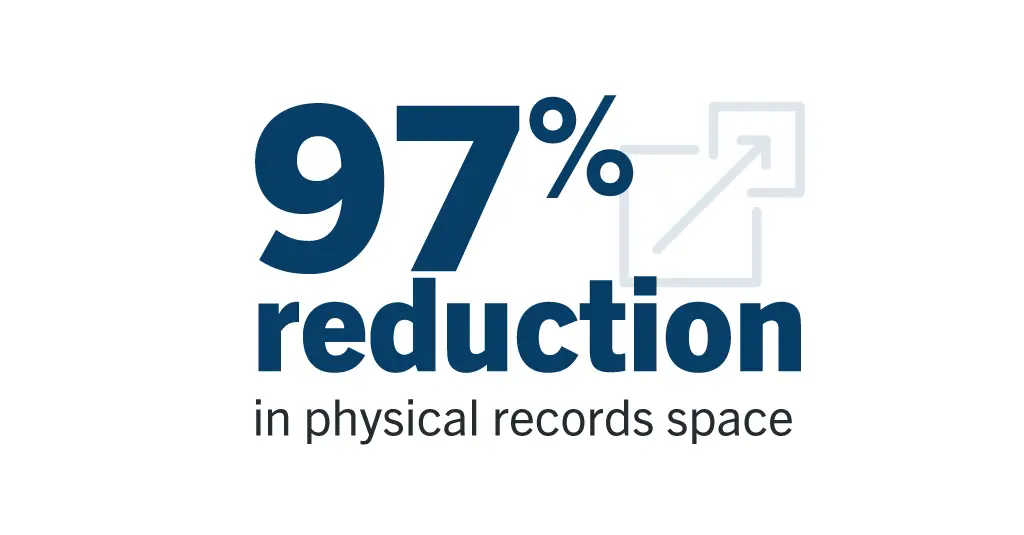
Records managers might think a 97% storage reduction is impossible. For Brian Mooney, IT director at the Louisiana Patient’s Compensation Fund (PCF), it was a matter of innovative thinking.
The PCF provides medical malpractice coverage for private practitioners and hospitals in the state. On top of this, the organization provides ongoing medical care for injured individuals in medical malpractice cases. With 60 employees, the PCF insures around 28,000 providers and oversees a yearly budget of $150 million.

Protecting providers and ensuring fair compensation for patients creates complex and wide-ranging recordkeeping needs. Manually managing critical and often sensitive information created a logistical headache. This perfect storm drove the team to seek a new solution in Laserfiche.
Today, the PCF uses Laserfiche for a variety of processes, including:
“We’ve always been very happy with Laserfiche and how easy it is to use and store documents,” said Mooney. “We were an early adopter of records retention schedules at a state agency. We’ve been a model for many other agencies looking to modernize their records management.”
At any given time, the PCF covers the medical bills for 50 to 100 patients. Additionally, the PCF may have 4,000 claims open simultaneously, which take an average of three to five years each to close. The sheer amount of paperwork related to these tasks made document storage untenable. File retrieval during audits could take days.
With approval from the Louisiana Secretary, the organization implemented an “imaging exception” that allows scanned documents to be retained digitally through Laserfiche. This system meets state guidelines for secure storage, backup and distribution, facilitating automated retention schedules and reducing physical storage needs by 97%.
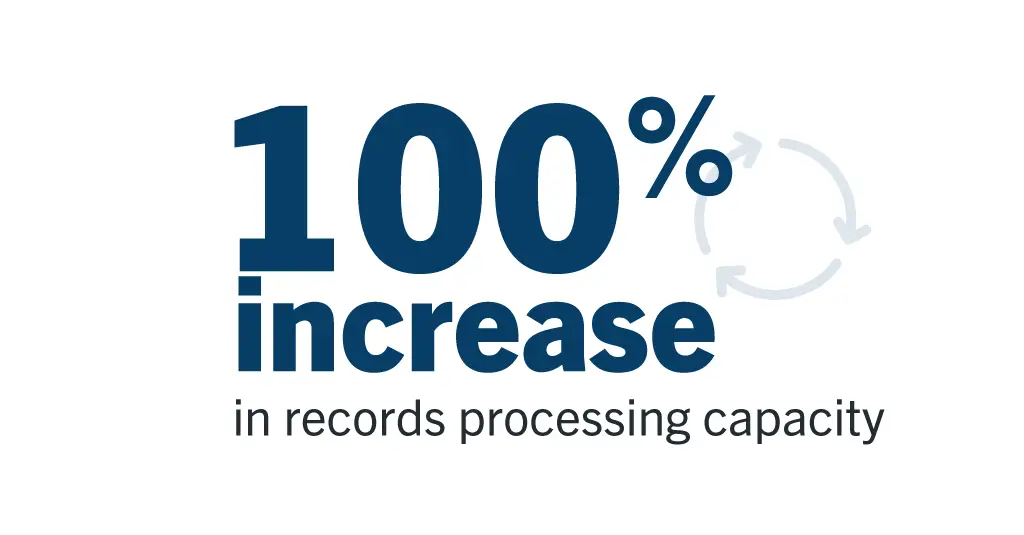
Today, staff can navigate the system and retrieve documentation promptly. What previously took days now takes minutes. The organization’s records processing capacity has also doubled. Staff can now process more than 700 claim, panel, and surcharge records per week. And with standardized records management practices, the organization has regained control over its information, mitigating risk of lost files or noncompliance.
The PCF serves both patients injured in medical malpractice cases and the doctors and providers involved in medical malpractice cases. In malpractice cases, the first step involves a medical review panel. The panel’s purpose is to evaluate the case and determine whether malpractice took place.
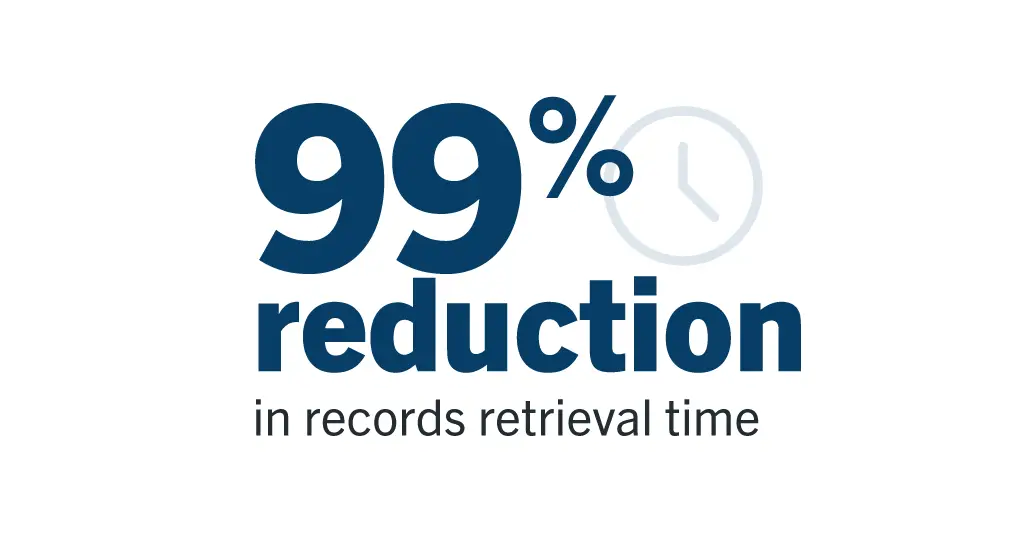
The PCF staff must retrieve records in a timely manner: Non-compliance with a strict three-day deadline means legal consequences and fees. Mooney and his team transformed this tedious, hours-long search for documents. With all information digitized and centralized in Laserfiche, staff can now easily search and retrieve the documents they need within minutes. This alleviated the stress of working on such a tight deadline and made the organization more responsive.
“We get lots of records requests, and with Laserfiche, the team is able to put them together much better and faster than we used to in the past,” said Mooney.
Laserfiche facilitates the flow of documentation for these panels. Robust security features help the organization maintain and track proper access to sensitive information.
Securing this information long-term is crucial, as malpractice claims panels can take an average of two years to complete.
Since implementing Laserfiche, the PCF has reduced errors, saved staff time and created peace of mind for meeting state-level requirements.
Recently, the PCF set out to further improve its records management. The team, facing high turnover and a growing number of complex documents, needed to quickly bring remaining staff up to speed on the project. PCF again turned to Laserfiche, this time integrating it with Canon IRIS to automate the manual steps associated with indexing employee information.
This project had three goals: Leverage experienced staff, reduce human error and reduce the learning curve for new hires. They started by training the Canon IRISPowerscan system to:
Laserfiche then automatically routes documents to their final Laserfiche folder destination once they are indexed, and triggers notifications for relevant staff.
This automated indexing workflow has vastly improved the PCF’s records management, reducing the risk for error and decreasing onboarding time for new hires. The PCF has also reclaimed staff time through Laserfiche’s scalability and ease of integration.
What started as a simple digitization project used by a handful of people has expanded to an interdepartmental initiative. Mooney and his team’s use of Laserfiche to double claim, panel, and surcharge records processing capacity has inspired new uses, with the transformation of the HR and accounting teams’ workflows on the horizon.
Additionally, Mooney is on the path toward using Laserfiche Forms to digitize and automate the surcharge form process, which would streamline the movement of documents into the PCF’s system and support $80 to $100 million worth of enrollments per year.